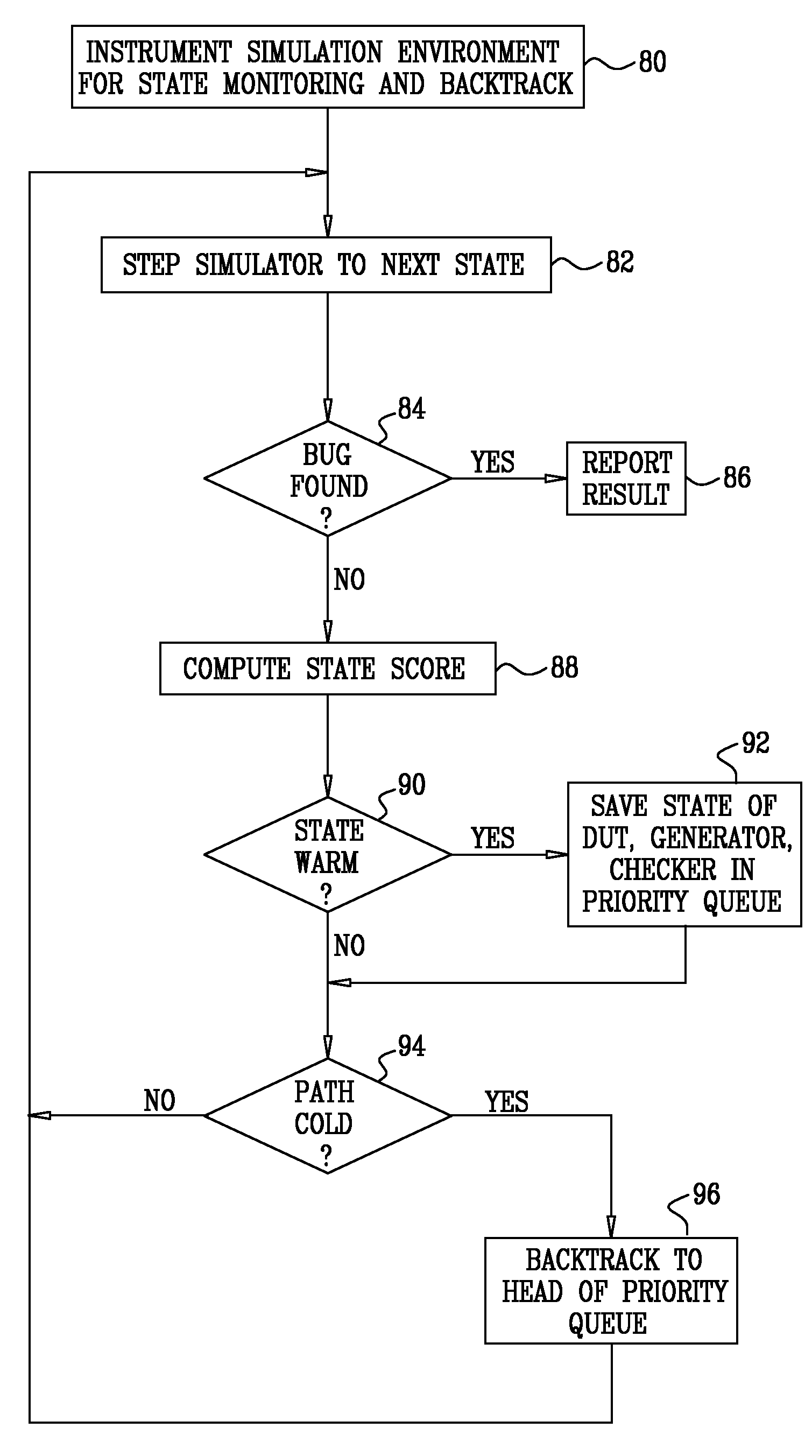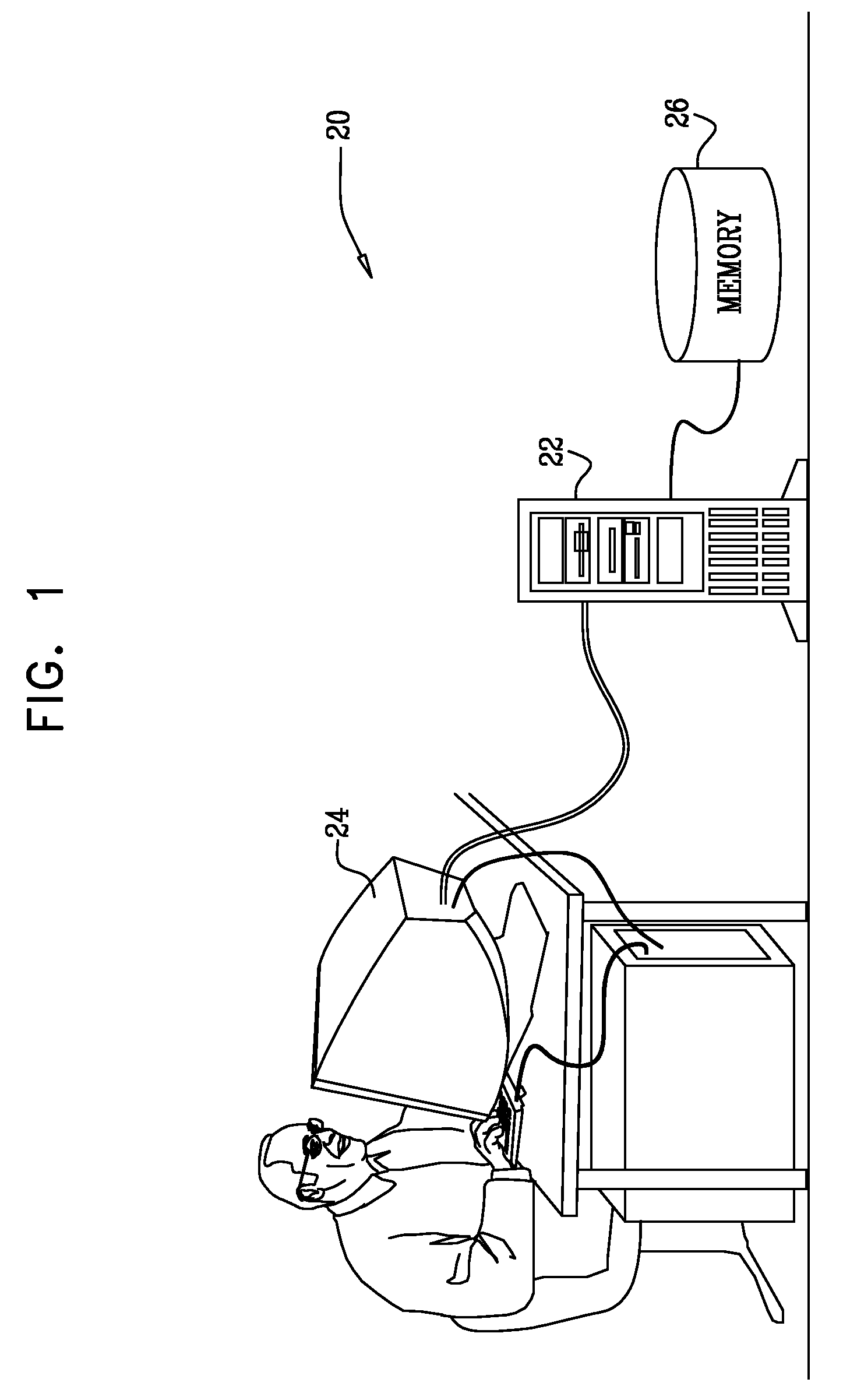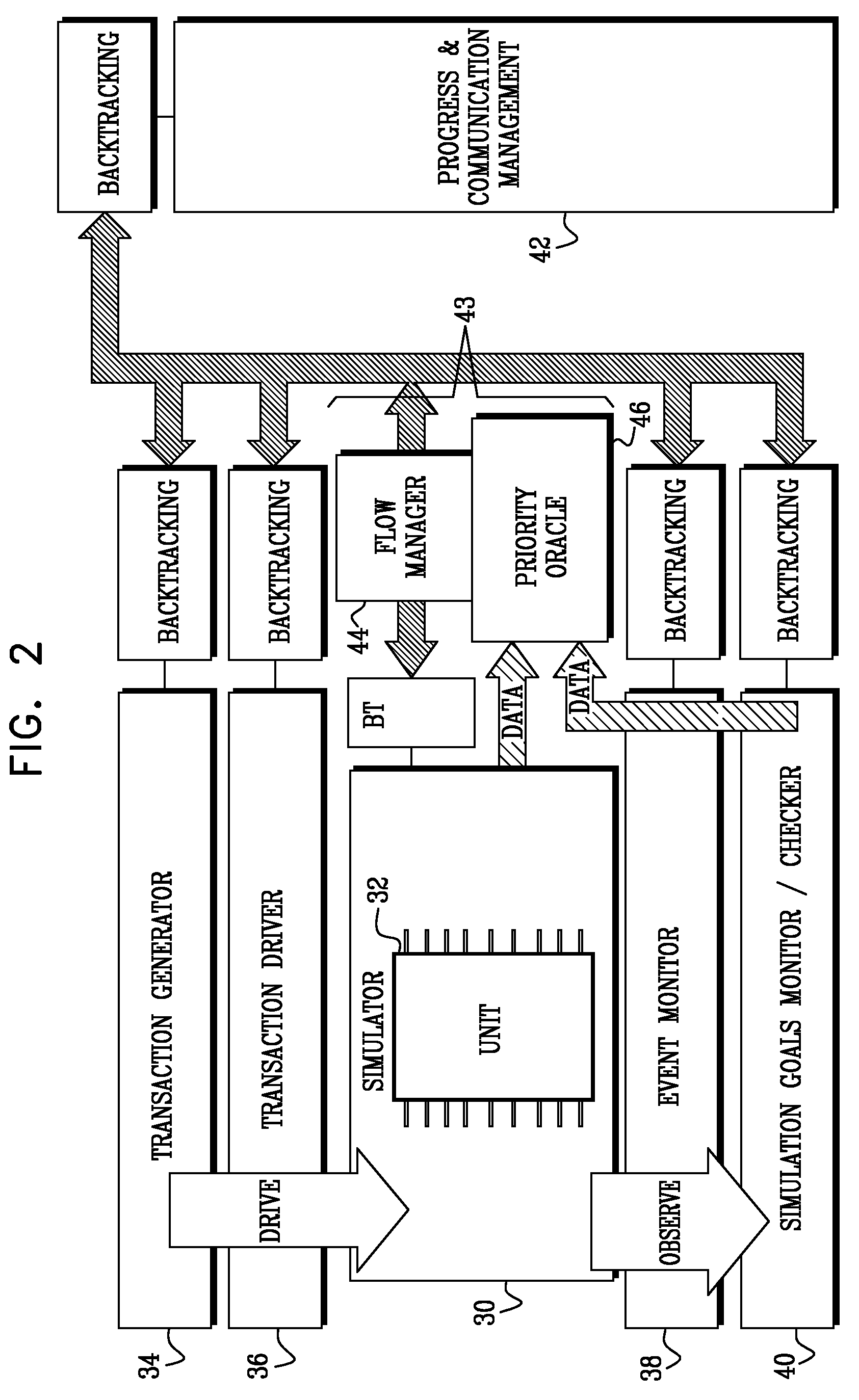Simulation System with Guided Backtracking
a simulation system and backtracking technology, applied in the field of simulation-based testing of complex designs, can solve the problems of high quality expectations, tighter time-to-market requirements, and high quality expectations, and the availability of verification tools cannot keep up with the rapid increase in design complexity, etc., to achieve the effect of ensuring that the device simulation will reach all possible bugs, and formal techniques limited
- Summary
- Abstract
- Description
- Claims
- Application Information
AI Technical Summary
Benefits of technology
Problems solved by technology
Method used
Image
Examples
Embodiment Construction
[0014]Embodiments of the present invention that are described hereinbelow provide methods and systems for guiding a design simulation efficiently toward a target state, such as a state in which a bug occurs. These methods may be used in conjunction with new or existing simulation environments, in which a stimuli generator, which is typically software-based, is used to provide inputs to a simulated design under test. The simulation environment may also comprise other components, such as event monitors and checkers. These embodiments can take advantage of both the knowledge of the verification engineer, which is typically coded into the stimuli generator and is used to bias the stimulation toward areas of interest in the simulation state space, and knowledge that is automatically extracted from the simulation itself, as described hereinbelow.
[0015]As the simulation runs, it generates a sequence of simulation states, each corresponding to a certain simulated state of the design and an ...
PUM
 Login to View More
Login to View More Abstract
Description
Claims
Application Information
 Login to View More
Login to View More - R&D
- Intellectual Property
- Life Sciences
- Materials
- Tech Scout
- Unparalleled Data Quality
- Higher Quality Content
- 60% Fewer Hallucinations
Browse by: Latest US Patents, China's latest patents, Technical Efficacy Thesaurus, Application Domain, Technology Topic, Popular Technical Reports.
© 2025 PatSnap. All rights reserved.Legal|Privacy policy|Modern Slavery Act Transparency Statement|Sitemap|About US| Contact US: help@patsnap.com



